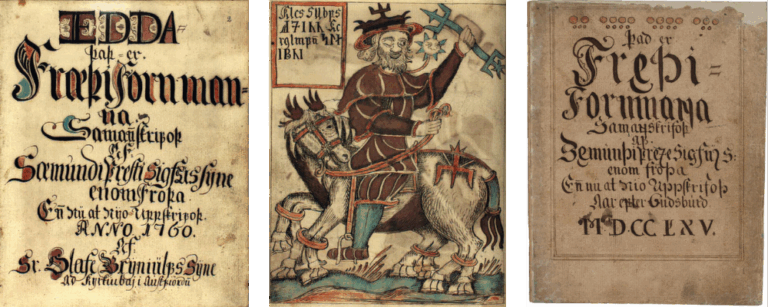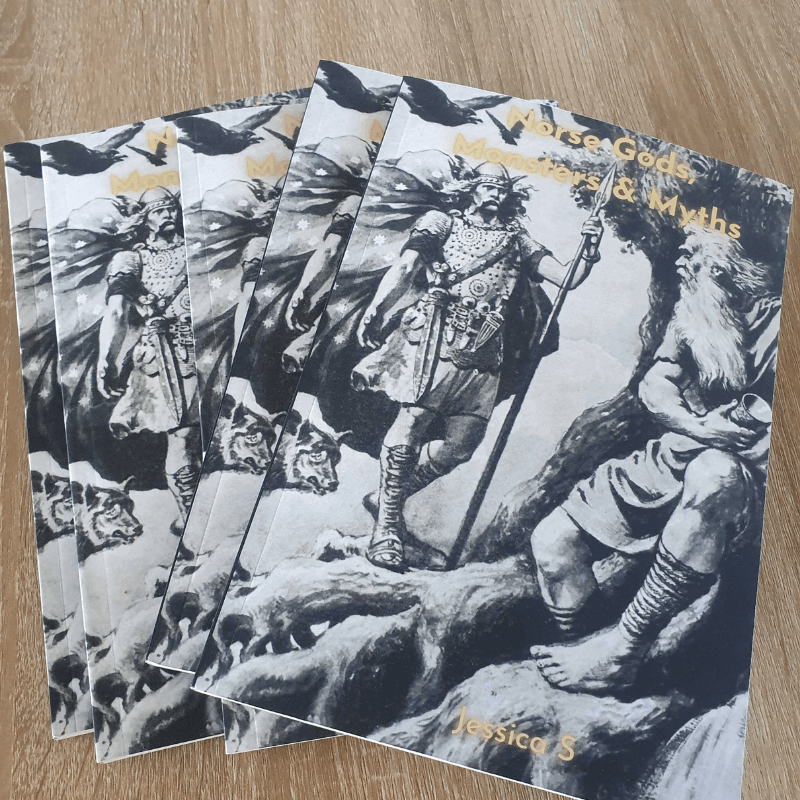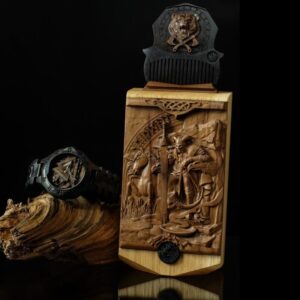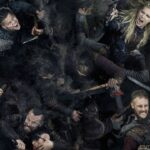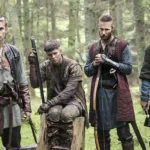Reading time: 16 minutes 30 seconds.
Very few images of the Norse gods survive from the Viking Age.
The ones that do survive tend not to be very detailed as they are mostly carved on runestones, a difficult medium for fine details.
Therefore, many of the most famous surviving images of Norse mythology come from centuries later, from Icelandic manuscripts, copied and illustrated in the 18th century.
These images are based on descriptions of the gods and mythological stories, mostly written down in the 13th century CE.
While the stories recorded are based on older stories transmitted orally during the Viking Age, they were recorded by Icelandic Christians, making the influence of Christian ideas inevitable both in the recorded stories and the images.
The illustrators are far enough removed from Viking paganism that their understanding of the Norse gods, and therefore their depiction of the Norse gods, may be no more accurate than we have today.
But let’s look at the images surviving in the two most famous of these manuscripts to see what they reveal about the Norse gods.
Manuscript NKS 1867 4to is a paper manuscript from 1760 written by the priest Ólafur Brynjúlfsson.
The 244 leaves contain 13 images from Norse mythology.
The other is SAM 66, written by Jakob Sigurðsson and dating to 1765-1766. It contains 16 illustrations of Norse mythology.
Audumbla and Buri
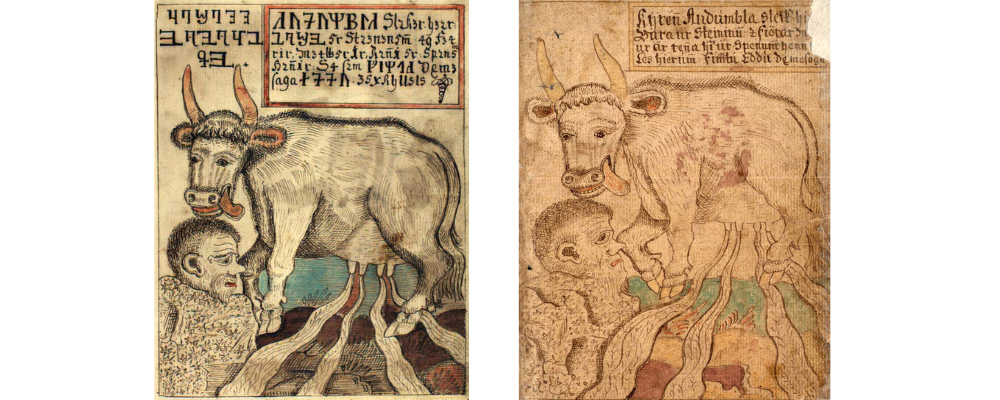
This first image relates to the Norse creation myth.
According to the myth, in the beginning of time, there was a great void with Muspelheim, a world of heat and fire, and Niflheim, a world of cold and mist, at either end.
Over time, the heat of Muspelheim and the cold mist of Niflheim seeped into the void and mixed together to create a primordial goop.
The first giant, Ymir, and a primordial cow called Audumbla were born from the goop, and some of it hardened into salt rime.
Ymir fed on Audumbla’s milk while Audumbla fed on the salt rime.
In time, Audumbla licked the first god, Buri, out of the rime.
This manuscript image shows Audumbla with milk flowing from her udders like rivers while she licks Buri out of the rime.
It is interesting that Audumbla’s udders cause four rivers. When the universe formed, it centered around a great tree called Yggdrasil, which was fed by four rivers.
The artist clearly associated the rivers with Audumbla’s udders, even though this is not explicitly stated in the surviving sources.
Odin

We next meet Odin, Buri’s grandson and leader of the Norse gods. Odin holds a sword in one hand and a spear in the other.
Odin is never explicitly described as carrying a sword, but he famously had an enchanted spear called Gungnir.
Spears were the weapon most commonly carried by warriors in the Viking Age, which is why it was an appropriate attribute for Odin as the god of war.
By the 18th century, the sword was the quintessential warrior weapon, which is probably why the artist placed it in his hand.
Odin appears with one eye as he infamously plucked out his own eye as a sacrifice to drink from the well of wisdom.
A raven sits on either of his shoulders, and these are his companion ravens, Huginn and Muninn, whose names mean thought and memory.
They reportedly flew out into the world each day and reported to Odin everything they saw and heard, representing Odin as the god of wisdom.
They also circled battlefields, scavenging dead bodies.
Here they were believed to accompany Odin as he chose the bravest fallen warriors to live in his hall, Valhalla, in Asgard, the realm of the gods, until they are called on to fight alongside the gods in the final battle of Ragnarok.
The sun in the sky, prominent in the illustration, is also interesting.
Odin was associated with a symbol that we often call a “sun wheel.”.
It looks like a swastika, but we don’t know what the Vikings called it or what it meant to them.
Unfortunately, the symbol has been adopted by white supremacist movements in the modern era.
Odin on Sleipnir

In addition to his ravens, Odin was also described as having an eight-legged steed called Sleipnir.
This incredible horse, which could slide between the nine worlds of the Norse cosmos with ease, was a child of Loki.
He gave birth to the horse when he shapeshifted into a mare as part of one of his trickster plans.
Odin again appears with one eye and the sun prominent in the image. In one of the images, he carries his spear, while in the other, he again appears with a sword as he holds Sleipnir’s reins.
Thor

This is Thor, son of Odin and the god of thunder.
He was considered the strongest of all the gods and was charged with protecting the worlds of the gods and men from the menacing threat of the giants with his hammer, Mjolnir.
The form of the Icelandic hammer differs significantly from what we imagine today.
There seems to be no mythological reason for the staff he carries in his other hand in the first image. In both, he can be seen wearing a belt, which is Megingjörð, a belt worn to double his strength.
In the second image, the item he holds in his hand is probably a glove.
He also had a pair of iron gloves called Járngreipr.
The serpent draping around his neck in both images is a reference to the sea serpent Jormungandr, whom we will learn more about below.
The prominent sun suggests that it may not have just been associated with Odin, but the Aesir gods in general.
Loki
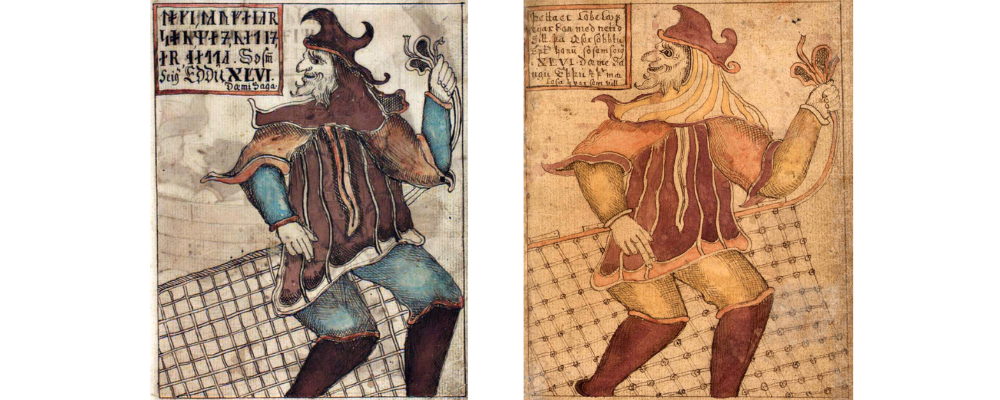
Next, we meet Loki, the trickster. Loki was a giant, or Jotun, allowed to live among the Aesir gods due to a blood brotherhood pact he made with Odin.
He made trouble for the gods, for example, cutting off Sif’s hair and helping another giant kidnap the goddess Idun, but he was always on the side of the gods in the end and helped them sort out the trouble that he himself started.
That is, until he was involved in the death of Baldr, another son of Odin, but more on that below.
After this, he was forced to flee Asgard and hid out in a cabin on top of a hill near a stream.
He spent his days making nets to catch fish. In this image, he appears with his net.
When the gods found him, Loki shapeshifted into a salmon and fled into the stream.
The gods caught him in a net.
He was then chained to a rock in a cave with a serpent hanging over him to drip painful venom onto his body.
There he is cursed to stay until Ragnarok.
Heimdall

Heimdall is the watchman of the gods who lives in a great hall overlooking the rainbow Bifrost bridge, the main entrance to Asgard.
He has a horn called Gjallarhorn, which can be heard throughout the cosmos.
He will sound this horn when he sees the giants advancing on Asgard over the bridge at Ragnarok.
In the illustration, Heimdall holds a staff, not an attribute he was associated with in Norse mythology.
In the illustration, Heimdall holds a staff, not an attribute he was associated with in Norse mythology. But the staff appears to be a caduceus, a staff with two intertwining serpents, which was associated with the Greek god Hermes, the messenger of the Olympian gods.
Heimdall also has wings on his hat, and Hermes was also imagined to have wings, and was sometimes depicted with a winged hat or winged shoes.
Therefore, the illustrator was clearly associating Heimdall with Hermes, depicting him as the messenger of the gods.
Ullr
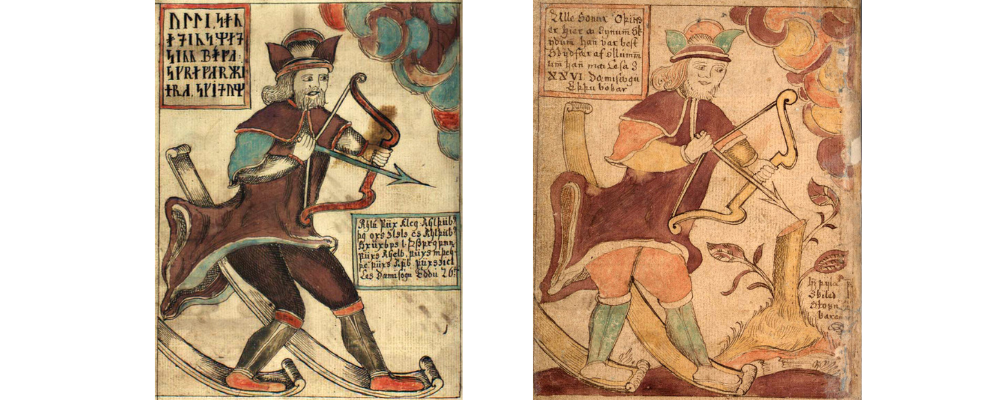
Ullr was a god of winter and snow who was probably worshipped in the Scandinavian region before the Vikings arrived and then incorporated into the Norse pantheon, where he was characterized as the son of Sif and the stepson of Thor.
He was the god of skis and skates, and also hunting and the bow, both of which are clearly reflected in the image.
Heidrun atop of Valholl
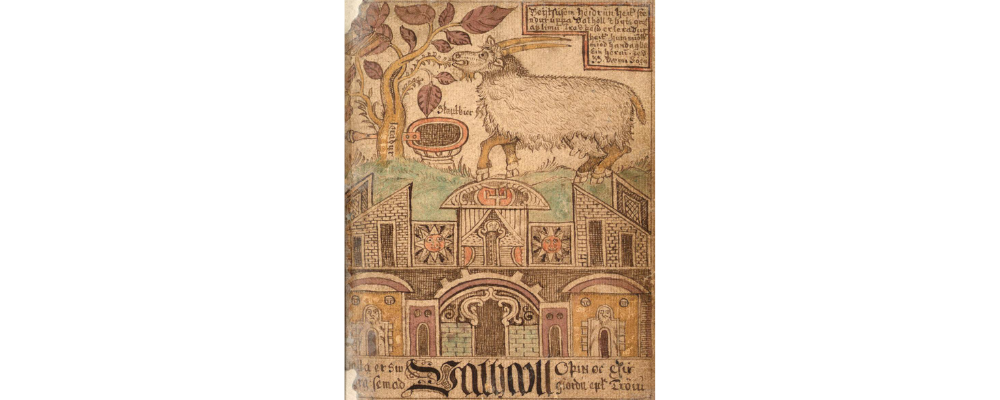
According to Norse beliefs, Odin chose the bravest fallen warriors from the battlefield to live in his hall, Valhalla, in Asgard.
There they feasted and trained, preparing to fight alongside the gods at Ragnarok.
According to the description of Valhalla, there the Valkyries serve the warriors, called the Einherjar, mead taken from the udders of a goat called Heidrun, who lives on the roof of Valhalla and feeds on the leaves of a tree called Laeradr, which may be another name for Yggdrasil.
Odin and Baugi
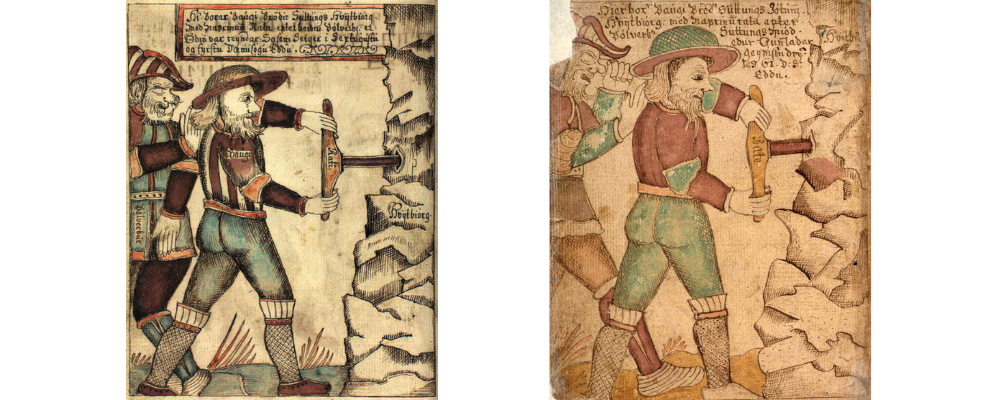
According to Norse mythology, a group of dwarves killed the smartest being alive, Kvasir, and used his blood to create the Mead of Poetry, an enchanted drink that granted the drinker complete mastery of the spoken word.
The mead fell into the hands of the giant Suttungr, and he stored it in a mountain guarded by his daughter Gunnlod.
When Odin heard about this mead, he was determined to drink it.
He disguised himself as a worker and traveled to a mountain where he found Suttungr’s brother Baugi working the nearby fields with slaves.
Odin orchestrated the death of the slaves and offered to work for Baugi in their place in exchange for Baugi helping him gain entrance into the mountain.
When it was time to pay up, Baugi obliged by drilling a hole into the mountain up to where Gunnlod was situated, but he tricked Odin by making the hole too small.
Odin turned himself into a snake to crawl up the hole.
This image shows the disguised Odin, identified by his one eye, watching Baugi drill a hole into the mountain.
Mead of Poetry

Continuing the story of the Mead of Poetry, once inside, Odin pretended to be in love with Gunnlod and frustrated that he did not have the words to properly describe his affections.
In this way, he convinced Gunnlod to give him three sips of the mead. But instead of small sips, Odin downed all the mead.
Holding the mead in his stomach, he turned into an eagle and flew back to Asgard, where vessels had been prepared to hold the mead that he would spit out on arrival.
When Suttungr realized what had happened, he turned himself into an eagle and chased Odin to the walls of Asgard.
But while Odin passed the walls safely, as soon as he passed, the gods lit a great fire around the walls.
When Suttungr tried to fly through, he was killed.
This moment is depicted in the illustration.
According to the story, while flying over Midgard, the realm of men, Odin accidentally urinated out some of the mead.
It is this mead that is responsible for oratory talent in men, and is also included in the illustration.
Odin, Loki, and Hoenir

According to another story, one day Odin, Loki, and the enigmatic god Hoenir were traveling together.
They caught food to eat, but every time they tried to light a fire, it failed.
They soon heard an eagle cackling overhead. It claimed that it was preventing them from starting a fire and that he would only let them start the fire if they agreed to share their food with him.
They agreed, and this is the moment captured in the illustration.
When the food was ready and the eagle swooped down, Loki tried to stab the eagle, so it picked him up in its talons and flew off with him.
While in the air, the eagle revealed that he was the giant Thjazi, and he said that he would only let Loki down if he helped him kidnap the goddess Idun, which Loki did.
This story suggests that Odin and his companions were traveling in Jotunheim, that the giant had the power to control reality, as the giant Utgard-Loki did when Thor traveled to Jotunheim.
Thor and Jormungandr
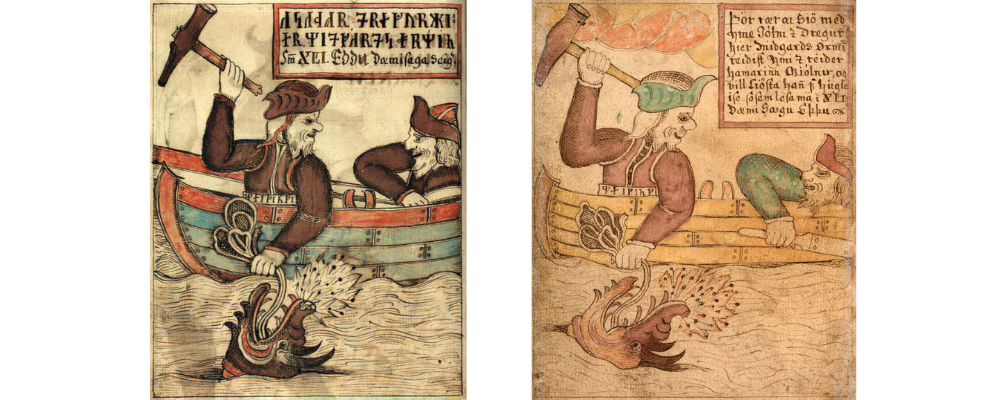
Another famous story from Norse mythology is Thor’s fishing trip.
Thor went to visit the giant Hymir, where he was greeted with hospitality.
But Thor was infamous for his enormous appetite, and Hymir did not want to slaughter all his cattle to feed the god, so he organized for the two to go fishing.
Thor killed all of Hymir’s cattle to use their heads as bait, much to the giant’s distress, but they made good bait.
Hymir was catching enormous fish, but Thor still seemed dissatisfied and demanded that they row out deeper.
Hymir was reluctant because he knew this would take them into the waters of Jormungandr, the Midgard Serpent.
A child of Loki with the giantess Angrboda, the gods so feared the serpent that they threw him into the waters surrounding Midgard to get him out of the way.
But there, he grew to such an enormous size that he can encircle the entire world and hold his own tail in his mouth.
He is only destined to emerge from his waters at Ragnarok when he will fight to the death with Thor, the two killing one another.
Eventually, Thor caught something so big in his line that it almost pulled him off his feet. Hymir knew that only Jormungandr could have the strength to challenge the god.
When Thor would not let his line go, Hymir cut the line, fearing a premature encounter between Thor and the serpent.
This is the moment captured in the illustration, with Jormungandr’s head protruding from the water, Thor ready to strike with his hammer, and Hymir about to cut the line.
Fenrir and Tyr
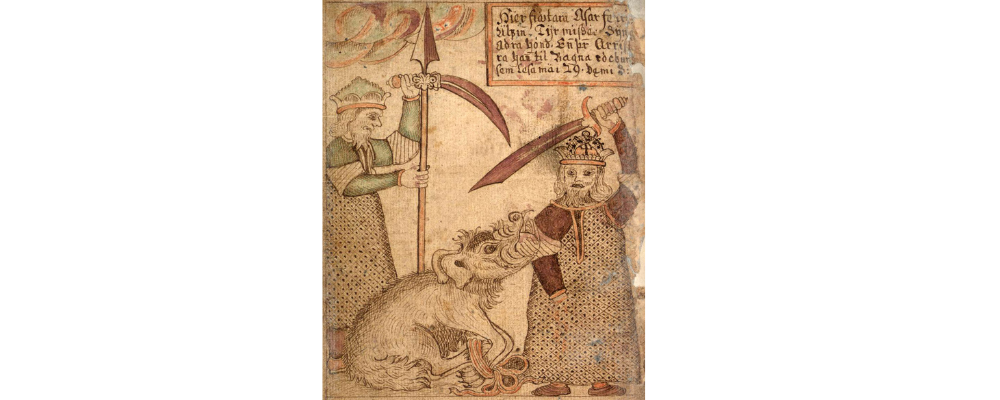
In Norse mythology, the mighty wolf Fenrir is another son of Loki and Angrboda.
The gods also thought that he was dangerous to be left unchecked, so they decided to trick him into letting himself be chained up.
On several occasions, they offered him chains and asked him to put them on – since no one could get close without his cooperation and break them as a show of his strength.
The prideful Fenrir was happy to show off.
The gods eventually commissioned the dwarves to make magical chains called Gleipnir, which were as light as a ribbon but could not be broken.
Fenrir was understandably suspicious when he was presented with these chains, so he only agreed to put them in if one of the gods would put their arm in his mouth as an assurance.
Knowing it was a trick, no one wanted to agree, but the noble god Tyr made the sacrifice.
When Fenrir could not break the chains, he realized that he had been tricked and cut off Try’s arm.
This illustration captures the moment just after Fenrir has taken Tyr’s hand.
The other man in the image is probably Odin, as indicated by the spear. Fenrir was then destined to remain in chains until Ragnarok.
Death of Baldr

Baldr was the son of Odin and his wife Frigg and was considered the fairest and most just of the gods.
When he was young, his mother was worried about his safety, so she extracted promises from everything in existence never to hurt her son or assist in hurting him.
This made Baldr invincible, and the other gods often amused themselves by throwing weapons at Baldr and watching them bounce off harmlessly.
Loki was determined to learn if Baldr had any weaknesses, so he disguised himself as an old woman and joined Frigg’s entourage.
The queen of the gods eventually admitted that she had forgotten to get the oath from the mistletoe plant. Loki immediately fashioned a mistletoe dart.
The next time the gods were playing their game, he convinced the blind god Hodr to throw the dart at Baldr, killing him.
This illustration captures this moment, with Loki guiding Hodr to stab Baldr with the mistletoe weapon.
This is what eventually caused the alliance between Loki and the gods to break, and the imprisonment of Loki described above.
This is a prerequisite for Ragnarok, so the death of Baldr is often seen as the first in a series of events that lead to the end of the world.
Hermodr, Baldr, and Hel
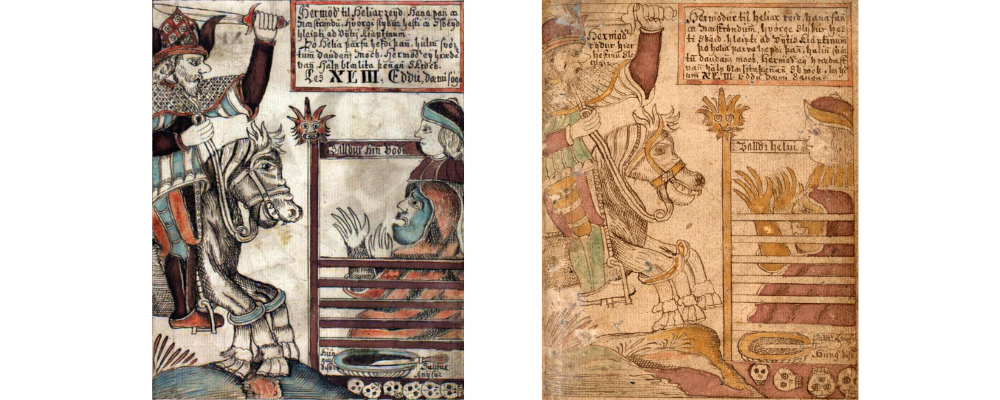
Because Baldr did not die on the battlefield, Odin could not take him to Valhalla. Instead, he found himself in Helheim, an underworld in Niflheim ruled over by the giantess Hel, another child of Loki and Angrboda.
Frigg asked who would ride to Helheim and bargain with Hel for Baldr’s return, and Hermodr, another son of Odin, agreed.
Odin lent him his steed, Sleipnir, for the journey.
This illustration shows Hermodr at the gates of Helheim, where he sees Hel, whose face is blue in color, because she was depicted as half black and half white, which is believed to mean that she was half living and half dead.
The image also shows Baldr sitting in Helheim.
Hel agreed to free Baldr if the gods could prove that he was universally loved by having everything in existence weep for him.
The gods almost succeeded in this feat, but one witch called Thokk, believed to be Loki in disguise, refused to weep. Consequently, Baldr was required to stay in Helheim.
Gangleri with High, Just-As-High, and Third
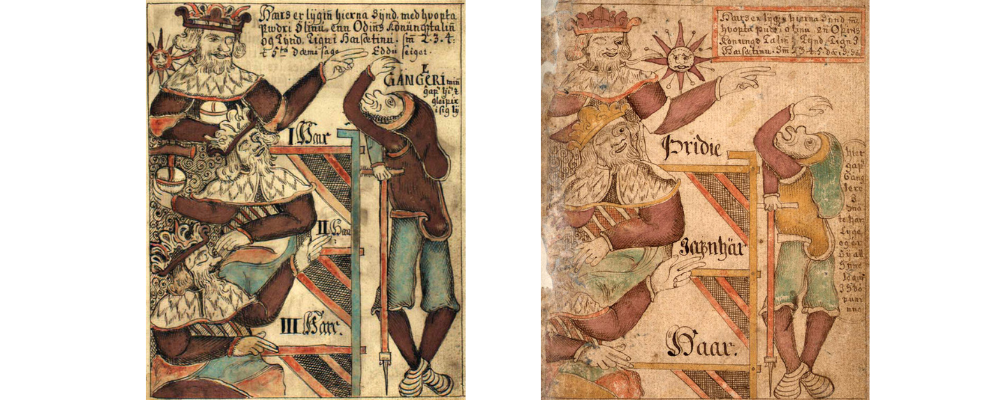
In one episode of the Prose Edda, the Swedish King Gylfi disguises himself using the name Gangleri and engages in an exchange of wisdom with three creatures called High, Just-As-High, and Third, all of which are believed to be Odin in disguise.
This illustration depicts their meeting.
They exchange information about many aspects of Norse mythology, including the Ragnarok prophecy.
This is a prophecy received by Odin that explains how the world will end in a cataclysmic battle between the Aesir gods and an enemy army led by Loki and his children.
It is interesting that no scenes from Ragnarok appear in the surviving manuscripts, when they are some of the most popular themes in modern illustration of Norse myth.
